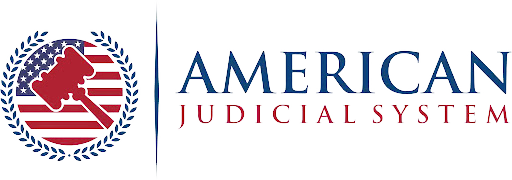When a truck accident occurs, fault determination is rarely black and white. At stake are not just insurance claims, but livelihoods and reputations. To discern who’s at fault, you must consider an array of influencing factors – from human error and mechanical failures to environmental conditions and beyond.
This guide sheds light on the 12 key factors that are critical in navigating the intricate process of assigning responsibility in truck accidents.
1. Driver Error and Behavior
Is human error at the helm? Often, fault in accidents is tethered to driver decisions. Speeding, distracted driving, or a failure to observe traffic signals can shift responsibility squarely onto the driver’s shoulders.
Yet, the context matters—whether it was a momentary lapse or part of a pattern of reckless behavior. Investigations dig into logs and elicit testimonies to piece together the driver’s actions before impact. This scrutiny can shape the legal narrative, establishing whether an accident was an avoidable consequence of poor decision-making.
2. Truck Maintenance and Mechanical Failure
A well-maintained truck stands strong; neglect it, and risk transforms it into a hazard. Mechanical failures that precipitate accidents often point to maintenance lapses — assigning fault to those charged with the truck’s upkeep.
Did brake failure cause an unstoppable descent? Was there a tire blowout due to wear ignored by routine checks? Analyzing maintenance records and inspection logs exposes whether negligence in upkeep played a role—pinning responsibility on either the driver’s oversight or the company’s laxity in enforcing rigorous safety standards.
3. Compliance with Hours of Service Regulations
Fatigue is a silent adversary on long hauls, making compliance with Hours of Service (HOS) regulations not just legal, but vital for safety. These rules limit driving hours, dictating rest periods to ensure alertness behind the wheel—a breach can be among the common causes of truck accidents.
If an investigation reveals a driver’s logbook overrun with hours or tampered data, the fault may tilt heavily against them, asserting that exhaustion was foreseeable and preventable. It’s these details that can turn the tide in discerning where responsibility lies in the aftermath of a crash.
4. Trucking Company Policies and Practices
Scrutiny often extends beyond the driver, reaching into the heart of a trucking company’s operations. Were training programs sufficient? Did dispatchers push drivers beyond reasonable limits? A reputable truck crash law firm will dissect these elements, seeking evidence of systemic negligence.
They understand that a company’s culture can foster an environment where accidents are more likely to occur. A fault may well be found in the policies and infrastructures that govern driving behavior, turning the spotlight on organizational accountability rather than individual error alone.
5. Cargo Loading and Securement Standards
Imagine a truck as a vessel; its cargo, if not properly stowed, can spell disaster. Fault determination often hinges on adherence to loading and securement standards—critical yet sometimes overlooked factors. An uneven load might shift the center of gravity, causing rollovers or loss of control.
Failure to secure cargo leads to spills that can trigger multi-vehicle collisions. When accidents point to poorly managed freight, liability expands to loaders or those who neglected rigorous checks. It’s where the precision of packing translates directly into road safety—and legal outcomes.
6. Weather and Road Conditions
Navigators of the road must respect the elements, for weather and road conditions act without bias or favor. They are arbiters that can alter outcomes in an instant. When accidents occur under the watch of inclement weather, fault analysis considers whether drivers and companies followed protocol for adverse conditions—did they adjust speed, maintain proper following distance, and execute required safety measures?
These factors serve as a litmus test for prudent driving and can delineate liability, shedding light on whether an accident was due to human shortcomings or simply nature’s unpredictability.
7. Vehicle Inspection Reports
Inspection reports are not mere formalities; they are a narrative of a truck’s readiness to face the highway’s demands. These documents, when meticulously reviewed post-accident, can unveil overlooked defects or maintenance neglect.
Should an inspection report detail issues unaddressed before the journey, it positions negligence as a possible culprit in the calamity—thus influencing fault determination. Moreover, these findings bear weight on the costs of trucking accidents, both in human and financial terms, by revealing preventable causes rooted in vehicle conditions prior to departure.
8. Accident Reconstruction Analysis
The aftermath of a truck accident is often a confluence of chaos and conjecture; here, accident reconstruction analysis emerges as a beacon of clarity. Experts recreate the crash using physics and evidence from the scene, decoding the actions leading up to the impact.
Their conclusions about velocities and trajectories can distinguish between an unavoidable event and one that could have been prevented with different choices or actions. This analysis becomes pivotal in courtrooms, where the articulated sequence of events sways judgments about fault, repercussions, and compensation for those affected by the incident.
9. Usage of ELDs (Electronic Logging Devices)
On the road, Electronic Logging Devices (ELDs) impartially chronicle a driver’s hours and behavior, ensuring regulatory compliance. These devices can flag instances of driving too slow due to fatigue or otherwise erratic behavior that may contribute to accidents.
When ELD data is extracted and examined, it provides a digital footprint that either corroborates or contradicts a driver’s account of events. Accurate and unalterable, this information is instrumental in painting an objective picture of the driver’s actions—a fundamental aspect when determining fault in a truck accident scenario.
10. Third-Party Vendor Contributions
Sometimes fault lines extend to third parties engaged in the truck’s journey. Consider maintenance providers, parts manufacturers, or even public entities responsible for road design and upkeep. If a faulty repair by a contracted service, a defective tire from a supplier, or neglected potholes contribute to an accident, responsibility may be shared.
These scenarios highlight the intricacies of liability—where the actions of external partners intertwine with outcomes on the asphalt. Dissecting these contributions is critical for understanding how multiple forces can converge to create an unfortunate chain of events on the road.
11. Witness Testimonies
Eyewitnesses can turn the tide of an accident investigation with their accounts, acting as critical cogs in the machine of justice. What did they see? A sudden swerve, perhaps, or the tail end of a risky maneuver?
The statements from those who were there—drivers, pedestrians, local residents—offer perspectives untainted by the biases inherent to those directly involved. Their contributions are sifted for consistency and credibility, constructing a narrative that could either diffuse fault or pinpoint it with laser precision on a specific party’s actions at the time of the truck accident.
12. Video or Photographic Evidence
In the digital era, video and photographic evidence often serve as silent yet indisputable witnesses to accidents. Dashcams, surveillance cameras, and even bystander smartphone footage can capture critical moments with stark clarity.
When available, such visual records dissect movements and impacts frame by frame—allowing assessment beyond human recollection or error.
This evidence can solidify claims of fault or exonerate those unjustly accused by illuminating the truth in its most unfiltered form. As a result, it has become an increasingly relied-on resource in the complex process of fault determination in truck accidents.
Understanding these factors is indispensable for accurate fault determination in truck accidents, ensuring accountability and paving the way for fair resolution in the wake of roadway mishaps.










